Subject-Object Metaphysics and Quality: A Reformulation of Logical Positivism
Subject-object metaphysics, the reality doctrine of modern day, with the apex of thought represented by the highest levels of abstraction in mathematics and Theoretical Physics, has its origins as a reaction, a parallel conception of the nature of the universe, to the advent of religion. It is its pair, it’s opposite if you will. And religious systems as they stand today can be defined as those systems of thought and belief whose purpose of to establish the authority and supremacy of a ruling power, such as royalty or religious authority duh as the Church. And by this definition is it too far a stretch to state the connection between current materialism, the reality of individualism as described by Bohm, and its authority?
The authority of materialism, the stratification of society to those that have and those that have not, to establish the credence and legitimacy of this behavior which leads us all in western society to consume, to believe that the one that ends up with the most toys wins, to cast aside those that we might love or feel for as chess pieces in the game of life on a board defined by a quest for power and wealth, subjugating all else. But modern-day Physics, and the limitations and postulates that are born from this very same religion, point very clearly to a collective consciousness that binds us all, that establishes beyond a reasonable doubt the relationship of the observer and the observed.
What also seemed very relevant, and somewhat lost in the deep physical exploration and developments of the twentieth century, was that the notion of an anthropomorphic God, a guiding force that drove the search for order, that in fact created the order, was completely divorced from Science. This reflected a major divergence from prior scientific development, as almost all of the works of Science, and philosophy/metaphysics, of the Age of Enlightenment alluded to or called out directly the role of God in their work and their underlying thinking. Even Kant, who proposes to expound upon and provide the full foundation of reason, finds that theology, morality, ethics and Science are all pillars of the same Church so to speak, they all coexist in a consistent manner and support each other for the framework of the human intellect and society.
Aristotle’s ordering of truth and knowledge, his epistêmê from which our word science stems from, had been inverted. First philosophy was now an afterthought of natural philosophy. This perhaps is the most significant metaphysical development in the last two hundred years; that metaphysics itself had been demoted. God was cast aside, metaphysics was tossed into the realm of pure speculation, and we have undergone an age of tremendous technological advancements thrusting us into the Quantum Era.
But the foundations of our society, the moral and ethical foundations which were so closely tied to metaphysics, philosophy and theology, had been lost. To what then were people supposed to look to help them understand how to live? How to interact with their fellow man/woman? Did Quantum Theory have anything to provide to this debate? Should the interconnectedness of “things” as empirically shown by the success of the theory and its application call into question this reordering of knowledge that was now hard wired into society and the education of our youth?
One of the modern authors and philosophers that has attempted to bridge this metaphysical gap as it were is Robert Pirsig, the author of Zen and the Art of Motorcycle Maintenance which was first published in 1974. The book was a bit of a cult classic, and narrates the story of an old college professor who is traveling cross-country to where he used to teach, and taking care of and maintaining his motorcycle along the way. The physical journey of Phaedrus, who is the main character in the book, runs parallel to his mental journey, which is a quest for truth within a world bounded by name and form, and the mental constructs that guide the individual’s perception of and reaction to this world of name and form that is what most of us would deem reality. Pirsig’s second book, entitled Lila: An Inquiry into Morals, was written about twenty years after the first. In Lila, Pirsig is more interested in the nature of what he refers to as the Metaphysics of Quality, rather than a journey into the nature of the ego or self which was the main topic of Zen and the Art of Motorcycle Maintenance. Although the two books go hand in hand, his metaphysical model is refined in his second book where he connects his beliefs that stemmed from his journey into the self in his first book into a modern Philosophical paradigm.
In the eyes of Pirsig, consistent with the author in fact, we have witnessed great paradigm shifts since the time of the ancient Greek philosophers, and even since the time of Newton in the 17th century. In the twentieth century, we have had several developments in science that have called this subject-object metaphysics view of reality into question. Empiricism, the fruits of objectivism, have led us to a much more inclusive view of reality, a view well described by Pirsig’s Metaphysics of Quality. Science in modern times is a hybrid of the subject-object metaphysics that could be argued stemmed from the works of Immanuel Kant, the influential German philosopher of the 18th century,[1] among others such as Newton even going back as far as Aristotle depending on your point of view and how far back into Western thought you wanted to go, combined with the mathematical foundations laid out by historical philosophers and modern day theoretical physicists.
Einstein’s Special Theory of Relativity tore off the reigns of a three-dimensional absolute space and time. He stated that a better model for the universe was a four dimensional system of co-ordinates representing the standard three dimensions of space, and a fourth dimension of time, i.e. spacetime, as the standard continuum from which Classical Mechanics must lay its foundations and built a theory of universal gravitation around that that proved to be even more sound than Newton’s physics. Furthermore, he shattered the belief that time was constant at all frames of reference as well as established that mass and energy were effectively equivalent, equal in proportion to the speed of light which was assumed to be constant no matter what an observer’s frame of reference. He proved that when travelling at great speeds, close to the speed of light, time actually slowed down relative to an unmoved observer (time dilation). That is to say it slowed relative to the person that remained stationary relative to the person that was moving at the speed of light.
Quantum Theory followed up on Einstein’s breakthroughs. The most prominent features of Quantum Mechanics were wave-particle duality, i.e. at the subatomic level particles appeared to be behave like particles as well as wave (weird) and the uncertainty principle, which basically put limits on what could even be measured in a given experiment (e.g. position and momentum), measurements that for all intents and purposes were in fact influenced by the act of measurement itself among other strange and fundamentally non-classical principles. So much for Classic, objective realist, fully deterministic Physics.
Wave-particle duality as described by modern Quantum Mechanics, as proven by verifiable and repeatable experimentation, must completely change our approach to the idea of what we call matter, substance, or any objects in the subject-object metaphysics view of the reality as well as what he role of the perceiver is in this reality, harkening back in many respects to the work of Descartes where res cogitans and res extensa where fundamentally related and not inseparable philosophical and metaphysical constructs (related by a third fundamental metaphysical construct incidentally, i.e. God).
Quantum Mechanics furthermore, breaks down what we would consider to be the absolute nature of cause and effect, and the interactions between particles or objects being governed by some fixed set of forces that interact with each other in a purely local and entirely deterministic way – there is no avoiding this conclusion anymore. The physical universe as we understand it today is fundamentally connected, it’s an undivided whole to use the words of David Bohm, and the observer has been established in one way or another as an integral part of the system, both with Relativity and with Quantum Theory, in many respects leading us right back to Descartes. All of which should fundamentally question our view of what we would consider to be reality, and most certainly renders classic subject-object metaphysics obsolete as Pirsig took so much pain to teach us.
As you can see, the twentieth century alone has contributed these paradigm shifts in the nature of reality and our perception of it. We can no longer look at the world as made up of subjects and objects. For empiricism itself, or Science, has showed us that these models are wholly inadequate. We now must view the world without the comforts of absolute space or time, and even without a clear distinction between matter and energy. Pirsig posits that a new paradigm is needed, one that acknowledges the relationship between the subject and object, the perceiver and the perceived.
Scientific method, experimentation, verifiable and repeatable results – all of these represent the core tenets of the scientific community and yet at their core, the driving force of science if you will, is this creative moment or experience that formulates the founding principle or idea that in turn drive the creation of theory itself, which in turn drove experimentation to either prove or disprove said theory. This was the irony of scientific method that so struck Pirsig that he attempted to establish a new metaphysics, one based upon Quality from which our subjective and objective world emerges. It is the experience and intellectual reaction and insight of the falling apple of Sir Isaac Newton, if we are to believe such fables, which in turn provided the impetus the creation of his theories that provide the very foundations of Classical Mechanics, what make them Classic in fact. And yet there was nothing scientific about this specific moment of revelation, and yet what was birthed from this experience is one of the monumental building blocks of Science itself, gravity.
Pirsig attempts to break down what he terms this subject-object view of the world, not leaning on any Eastern philosophical constructs, but creating a new metaphysical paradigm based upon the concept of Quality that connects the external and internal worlds of the perceiver in much the same way that Kant attempts to bridge the gap between empiricists and rationalists by pointing out their interdependence on each other. Quality, in Pirsig’s paradigm of existence and reality, is that concept and principle which underlies all experience, and that which is the source of all inspiration and creativity.
Quality for example, is source from which the hypothesis spontaneously germinates in the mind of the scientist upon which to test their experiments and which drive the experimentation process that was designed to illuminate facts and irrefutable truths. From Pirsig’s perspective though, the process of hypothesis and experimentation is an inspirational, fundamentally creative process that could not be deemed scientific in any way, shape or form. And yet ironically enough, the field of science, as defined by empirically tested theorems, in many respects was considered to be the only reality of the modern era, or at least the dominant reality, despite its foundation and fundamental dependence from Pirsig’s perspective on the existence of Quality from which our intuition about how things might actually work, the source of all science in fact before we start testing theories out.
In his first book, Zen and the Art of Motorcycle Maintenance (which incidentally has very little to do with Zen and is only tangentially related to motorcycle maintenance), Pirsig dissects Quality into two basic forms, Classic and Romantic, somewhat loosely corresponding to the feminine and masculine principles underling Far Eastern philosophy as reflected in the conception of Yīn-Yáng. Classic Quality represents the world of underlying form, the beauty of structure and logic, whereas Romantic Quality represents the world of immediate experience or perception, e.g. the Quality extant in seeing a beautiful vista or painting. In Bohmian terms, Pirsig is speaking of the explicate and implicate orders respectively that underlie our conception and perception of reality, although of course he uses altogether different terminology.
From a philosophical point of view, Pirsig describes two opposing viewpoints, one Eastern and one Western, dividing the basic philosophical conflict between the East and West as the view of the mystic and the logical positivist respectively. He argues that these two belief systems are mutually exclusive and his Metaphysics of Quality is an attempt to reconcile the two, again just as Kant attempted to reconcile the empiricist and rationalist traditions of his day and just as Bohm, and others, attempted to bridge the world of physics and the mind with his concept of the implicate and explicate order.
The logical positivists’ position is that the natural sciences are the only branches of knowledge that can legitimately investigate the nature of reality, given their reliance on experimentation and measurable results. This domain also includes subject-object metaphysics and all its subsequent branches of thought, science as we know it today and as it is taught to us in school. Pirsig’s position is that this view of the world is inadequate, and he refutes the argument that this means of inquiry is the only verifiable means to knowledge, just as he refutes the argument that mysticism is a purely subjective and emotional experience which should not have any bearing or relationship to objective reality.
Pirsig’s analogy of the Platypus, from a biological or zoological point of view, is probably his most powerful illustration of the limitations on this logical positivist point of view. The early biological classification of animals segregated mammals and reptiles as distinct and separate from each other – mammals suckled their young, and reptiles laid eggs. This model worked very well in categorizing existing animals until the discovery of the duck-billed platypus was made in Australia, which both lays eggs like a reptile and then suckles its young when it is born like a mammal. The zoologist got around this problem by creating a new order of animal that included the platypus and the spiny anteater, solving the problem of the classification of this enigma by simply creating a new order or classification that would not break the existing model.
Pirsig then generalizes this concept, the Platypus, as an idea or concept that cannot be properly explained by an existing paradigm. Mystical experiences in Pirsig’s view are a Platypus to the logical positivist. It is not that the mystic experience has nothing to offer in terms of value or the enlightenment of truth, it is just that within the confines of subject-object metaphysics there is no frame of reference for the mystic experience. One then is presented with a choice. One can shrug off the mystical experience and argue that it has no intrinsic truth-bearing quality because it cannot be explained by his paradigm of thought, or one can search for a new paradigm that includes not only the world of the natural sciences and subject-object metaphysics, but also the meditative experience itself which is fundamentally subjective and could not be viewed in terms of subject-object metaphysics proper.
The view of the mystical tradition is that the fundamental nature of reality lies outside the realm of language, outside of the boundaries of name and form. It states that language splits things up into parts while the nature of reality is undivided and beyond our mental or reasoning capacity. Hence the Zen Buddhist will tell you to just sit, and with this sitting you will find out the true nature of reality. But from a Zen Buddhist point of view, if someone were to ask you what you believed the fundamental nature of reality was, you would not be able to answer the question. You would probably tell the questioner to just sit, and in this practice of sitting the nature of reality will become clear even if it didn’t lend itself to linguistic description.
This system of belief, this practice of direct experience of the source of all things, leaves something left to be desired in the world of the West. The Westerner wants answers to questions, he wants verifiable data and empirically driven conclusions in order to make up his world view. If answers are not forthright, if a language does not exist to describe the nature of the mystical experience, the logical positivist must conclude that the experience must only be a figment of the person’s imagination. Pirsig views his Metaphysics of Quality as a bridge between these two systems of belief. Within this paradigm, there at least exists the language, an underlying metaphysical framework, to describe the mystical experience along with the experiences of our everyday, objective world that involve the interaction between subjects and objects, and between objects themselves and the forces that act on these objects, that we more commonly associate with reality in the Western logical positivist sense.
The originator of all things in this paradigm, the seed from which all of the philosophy springs, is Quality. Pirsig’s divides this holistic notion of Quality between the Static and Dynamic. The Dynamic aspect of Quality is the pre-intellectual cutting edge of reality. It is the source of all things, and it is always new and fresh. It is the Dynamic aspect of Quality that one taps into when they meditate. When one sits and allows his thoughts to flow unobstructed, catching glimpses of the nature of Mind, one is exploring the Dynamic aspect of Quality. The Static aspect of Quality in turn is a pattern of one-sided fixed values that tries to contain, box in, the ongoing free force of life. It is derived from fixed laws and the traditions and values that underlie them. It is Static Quality that makes up our culture and defines it.
Dynamic Quality is changeless, that aspect of reality or existence which is changeless and yet at the same time the source of all things. We can, and do often, tap into it, and in fact the concept of Quality itself originated from Pirsig’s curiosity regarding the source of hypotheses within the context of scientific method, arguably the most unscientific of things – with respect to how and where hypotheses themselves came from – and yet the very cornerstone of Science itself.
While Jung saw dreams as the most direct line of sight as it were into the unconscious, what he viewed as the eternal spring of inspiration, the source of what you might call intuition, to Pirsig, the Dynamic aspect of Quality represented this idea, i.e. the very raw and direct, the ultimate creative source, of not just experience but reality and existence in and of themselves – the eternal metaphysical spring as it were. To Pirsig, in his Metaphysics of Quality, while he does not speak directly about mystical, or higher, states of consciousness or awareness, one can surmise that during meditation, it would be the Dynamic aspect of Quality that was being tapped into, or unleashed as the case may be.
The static element of experience then, can be looked at as seen as everything else aside from the pure, unadulterated, direct Dynamic element. Every thought, or emotion we might have during an experience is the sum total of all our previous experience. All the events of our life are stored away in that most complex of machines – the human mind. We collect all of this information, all of our experiences. We cannot just live our lives without interpreting this information though. We must analyze it, categorize it; but most importantly we must run it through the existing programs of our brain before we can conclude or judge anything about our present experience.
These existing programs, the software that facilitates life in the hectic West, are the paradigms and models that we have been taught in school, or learned from our parents, or even religious dogma of any kind. All of this is used to sift the Dynamic Quality of the experience into small sand piles of what should be paid attention to, and what is unworthy of our attention. This is the static element of experience. The Dynamic and the Static parts of experience work together to formulate the entire experience. What goes unnoticed by the Static is surely recognized by the Dynamic – and vice versa.
Meditation then is the tool which connects us directly to the source of Dynamic Quality. In meditation we meet with the Dynamic and converse about the meaning of life. Its answers are all but obvious, and some questions go unanswered for many moons. Then when we are so close to giving up on the answer to our question, the answer comes at us in the most mysterious of ways. Knowing the Dynamic attribute of life, we can then see the static for what it really is. It is a map. The map changes over time. Even though Static Quality may be a bit of a misnomer, it serves its purpose. It provides us with the language and cultural context necessary to share our experiences with others.
He goes on to say that static Quality patterns are in need of reformulation when they exclude certain basic fundamental aspects of reality (like for instance the experience of meditation), demand blind obedience, and suppress Dynamic change. But Static patterns nevertheless do provide a necessary stabilizing force to protect Dynamic progress from degeneration. Although Dynamic Quality, the Quality of freedom, creates this world in which we live, these patterns of static Quality, the Quality of order, preserve our world. Neither static nor Dynamic Quality can survive without the other.[2]
From Pirsig’s point of view, subject-object metaphysics, or even Classical Mechanics itself which is simply a mathematical expression of subject-object metaphysics, represents our Static pattern of belief. This belief in and of itself is not inaccurate, yet in order for it to serve its purpose, it should not be asked to explain ideas or concepts that lie outside its domain. The experience of the mystic, or even altered states of consciousness that yield so called “out of body” experiences, are both examples of experiences that cannot be explained adequately by subject-object metaphysics, but that doesn’t mean that they should be ignored as representative manifestations of reality, even if they fall beyond the boundaries of subject-object metaphysics.
With Pirsig’s Metaphysics of Quality however, he proposes that there exists not only the language necessary to describe the empirical world of subjects and objects, i.e. subject-object metaphysics, but also the language to describe the direct, subjective and powerful experiences described by those in deep states of meditation, namely a direct connection to Dynamic Quality (Bohm’s implicate order) from which Static Quality (Bohm’s explicate order), are perceived and intellectually understood.
Pirsig theorizes that Quality is the originator of all subjects and objects. Quality represents the actual moment of intuitive understanding that one has before you are able to intellectualize subject-object duality. Furthermore, he states that subjects and objects can be defined, i.e. they can be described within the realm of Reason and Language, but Quality is the originator of subjects and objects, and in turn also the realms of Reason and Language themselves, and therefore is indefinable. Quality is effectively God in Pirsig’s metaphysical framework, he just casts it in a purely experiential and philosophical framework, one that is bereft of theology per se.
Within this subject/object dualistic view of reality and perception, using the Metaphysics of Quality, we now have a better tool to discuss the nature of experience. When we look at a painting for example, we might look at it and love it, or look at it and hate it. From a subject-object metaphysics point of view, there is no explanation for our attraction or repulsion to the painting. If we look at the painting objectively, we don’t necessarily have any emotional reaction to it. But we do have a reaction to it, a feeling so to speak associated with the experience of looking at the painting itself. We don’t know why, but we love it or we hate it. We can’t describe why necessarily but the reaction, the emotional response, is real to us. It is the Quality that underlies the experience that brings about our love or hate for the painting. We cannot define why – we can talk about the shades of color, or the exquisite detail of the picture, but these are opinions or subjective impressions hence they would be left out of any objective description of one’s experience with the painting.
The truth is though, that life is a series of experiences. Some we like, and others we do not. According to Pirsig, the difference between the two ends of the spectrum is the underlying Quality of the experience. Quality attracts us. One cannot deny this. We seek it in our relationships. We seek it in the books that we read, we seek Quality all day long. Pirsig’s Quality then, provides us with a framework within which we are more equipped to discuss the nature of experience or Life itself. It is quite inclusive.
From Pirsig’s perspective, subject-object metaphysics is the model within which we all perceive the world around us, as subjects and objects interrelating and interacting with each other which sat directly upon our belief in Newtonian Mechanics as the basis from which we consider the physical world around us to be, to exist. What Quantum Theory tells us is that this view of the world is fundamentally flawed, and limited to a domain of experience that has limits – limits not only at the subatomic scale which provide the intellectual basis for understanding the substratum of all physical reality, but also even limits at the cosmic scale, to which Einstein’s Relativity even had limits with respect to explaining what was actually going on – as evidenced by the notion of Dark Energy and Dark Matter which are still yet unexplained phenomena within Einstein’s models of reality as powerful as they might be.
And in Pirsig’s view, it is the idea of Quality that drives the behavior of the subjects in his system. It is the underlying principle which establishes the inherent goodnesss or badnesss of a thing or experience, the inherent Quality in it. Pirsig’s Metaphysics of Quality attempts to reconnect moral and ethics within a purely metaphysical framework to a great extent, and to this end it is successful, successful at least in establishing that a new paradigm of reality is required in order to reconnect our modern day framework of perception of the physical world with some form of practical philosophy from which morality and ethics can be reconnected, irrespective of an dogmatic religious system and consistent with modern science. In many respects, he re-attempts to establish a system of knowledge that contains within it a moral and ethical philosophy, in much the same way that the Greek philosophers did, except Pirsig creates his system on top of modern day physics, something which the ancient philosophers did not have access to and did not fundamentally understand.
From a metaphysical perspective, Robert Pirsig’s Quality encompasses not only subject-object metaphysics, but also at the same time subjugated objective reality, and even the act of perception of this objective reality, to the principle of Quality. Quality to Pirsig was the origin of all experience as defined by the interface between subjects and objects as bound by space and time, and at its core represented the grounding from which hypotheses themselves emerged, a process which he viewed not only as absolutely essential and critical to the evolution of science from which subject-object metaphysics had its roots, but also a fundamentally intuitive process which involved an understanding of some sort of implicate order (in Bohmian terms) which governed the behavior of the explicate order which was being studied.
How could the act of the creation of a hypothesis, a principle which lay at the heart of science itself, lay outside the realm and boundary of science? It was the answer to this question that led Pirsig to establish the principle of Quality as the primary source of not only subject-object metaphysics, but the means by which the act of perception itself takes place, the source of the intuitive process which reveals an hypothesis to a scientist before he starts and begins his experimental process which will eventually lead to the confirmation of, or the denial of, the original hypothesis in question. After which a new hypothesis will emerge, and so on and so forth.
Pirsig’s Quality by definition lacks description within the boundaries established by subject-object metaphysics, which is in turn bound by language itself, be it mathematical or linguistic or metaphysical in origin. This principle of Quality loosely corresponds to the Buddha Nature of the Buddhists, the Dao of the Daoist, the God of the Christians, the Allāh of the Muslims, the Great Spirit of the Native Americans, and the all-pervading Brahman of the Hindus, all of which represent concepts, metaphors, of the reality which lay beyond the realm of name and form, a reality from which the universe itself has emerged, and anthropomorphically speaking corresponds to the God of the various monotheistic faiths which have dominated the religious landscape for the last 1500 years.
But this fundamentally dualistic and relativistic reality, subject-object metaphysics, is limited conceptually by language itself, language which is a tool by which we as humans communicate thoughts and ideas to each other, a reality which at its most abstract, can be perhaps best described by the forms, or ideas which Plato so elegantly describes in his Allegory of the Cave. Plato’s Forms being the underling intellectual foundation upon which the knowledge of anything, the understanding of its essential and abstract nature, can be understood, which may be indescribably or indefinable in terms of language but exist nonetheless, at least in an abstract way, and form the basis of our knowledge or understanding of anything and everything.
All of these universal words that we use to denote the notion of the Christian God, of the Hindu Brahman, or the Muslim Allāh, or any other word we use to describe the underlying substratum of existence from which all things or ideas of things come from, are simply personifications and/or metaphorical representations of the very grounding of existence from which the world of name and form emerge, and from which the idea and notion of the Soul is defined, or at least its defined existence relates to according to almost all Indo-European theo-philosophical belief systems more or less.[3]
And the reality of this underlying substratum of existence seems to have been effectively (and somewhat strangely) described, by Quantum Theory, leaving aside the standard orthodox view that Quantum Mechanics defies any sort of metaphysical interpretation. It is this underlying substratum of reality, the belief in its existence and the belief and what can only be called “faith” in the ability to experience it directly, which rested at the heart of meditation practice which was the cornerstone of Eastern spirituality and ironically enough, was the same principle, the principle and belief (faith) in revelation itself, upon which all the prophets of all the great religions throughout the ages attested to and rested their authority on.
Pirsig’s premise is that all philosophical, or perhaps better put metaphysical paradigms strength should be judged by their initial bifurcation. In the Western mind, this initial bifurcation is established between the subject and the object, and connected by the act of perception. This initial bifurcation of reality is in fact a metaphysical assumption, albeit implicit, that lays at the heart of subject-object metaphysics and of course Classical Mechanics, and even rests at the heart of the debate on how to interpret Quantum Mechanics.
[1] Immanuel Kant was a German philosopher researching, lecturing and writing on philosophy and anthropology at the end of the 18th century. Kant’s magnum opus, the Critique of Pure Reason aimed to unite reason with experience to move beyond what he took to be failures of traditional philosophy and metaphysics. He hoped to end an age of speculation where objects outside experience were used to support what he saw as futile theories, while opposing the skepticism of thinkers such as Descartes, Berkeley and Hume. In his own words: “It always remains a scandal of philosophy and universal human reason that the existence of things outside us … should have to be assumed merely on faith, and that if it occurs to anyone to doubt it, we should be unable to answer him with a satisfactory proof.”
[2] Robert Pirsig, LILA, PG. 121. Note the parallels here between Pirsig’s idea of Dynamic Quality and Bohm’s idea of holomovement which is characterized by the constant unfolding of reality into various explicate orders and its subsequent enfolding back into the underlying and overarching implicate order, the metaphysical paradigm he uses to explain the quantized nature of subatomic reality that sits in contrast to our notions of the reality of an underlying continuous and fully realist, objective world.
[3] See the Chapter in this work that looks ta the nature of the Soul as reflected in Plato’s Phaedrus and in the Katha Upanishad for a deeper exploration of this notion of the Soul from an Indo-European philosophical perspective.

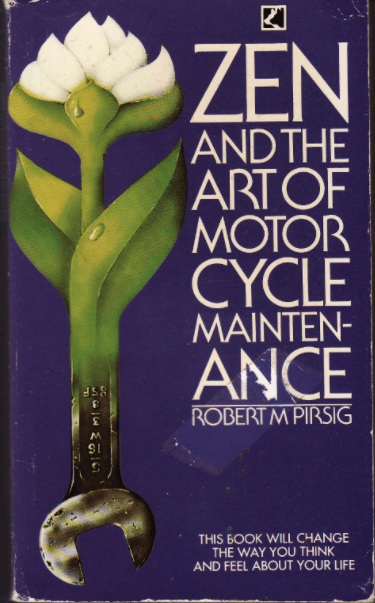

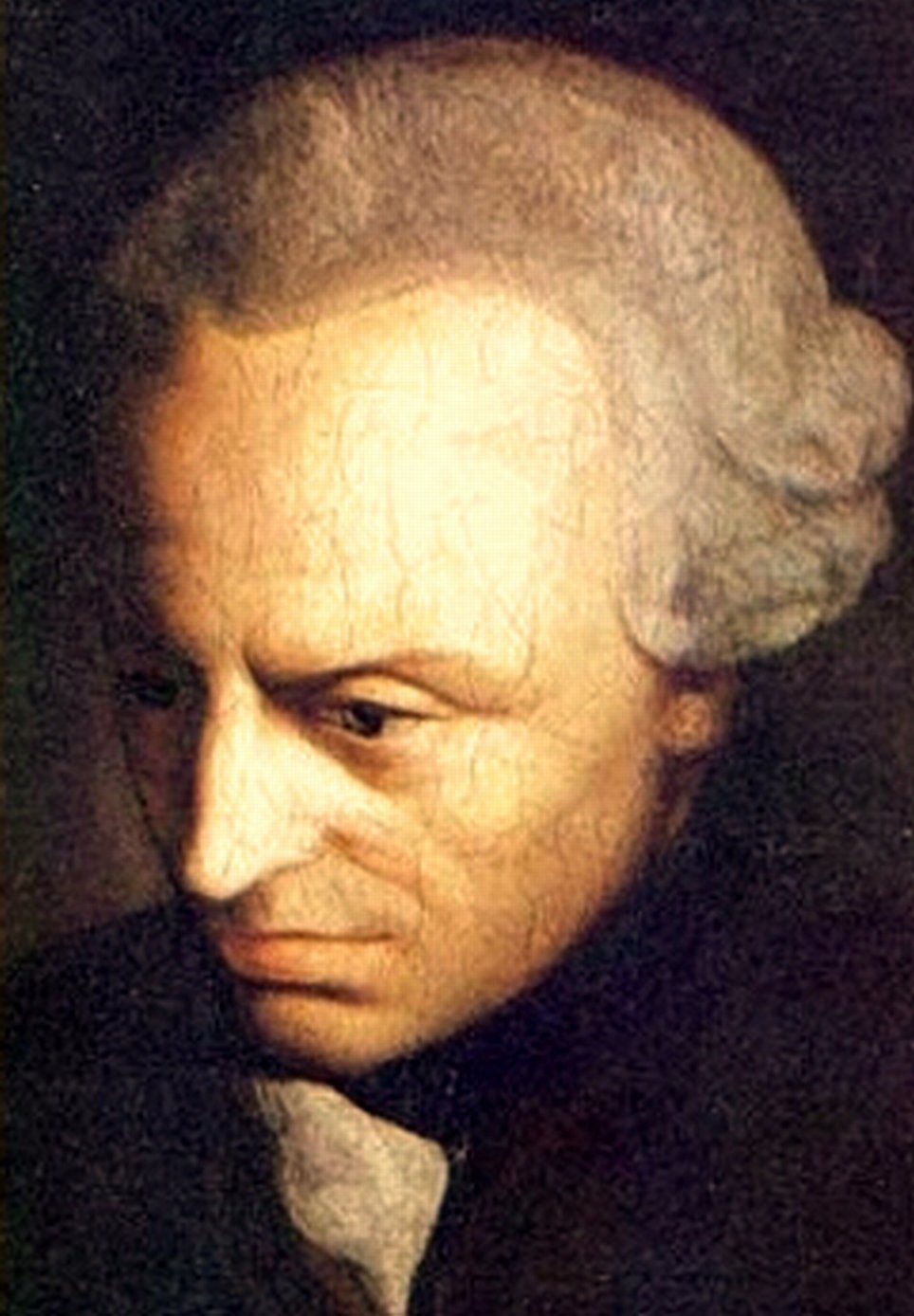


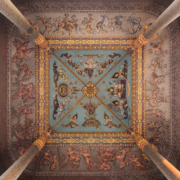
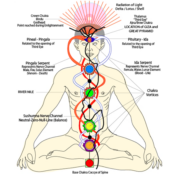
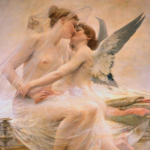

Leave a Reply
Want to join the discussion?Feel free to contribute!